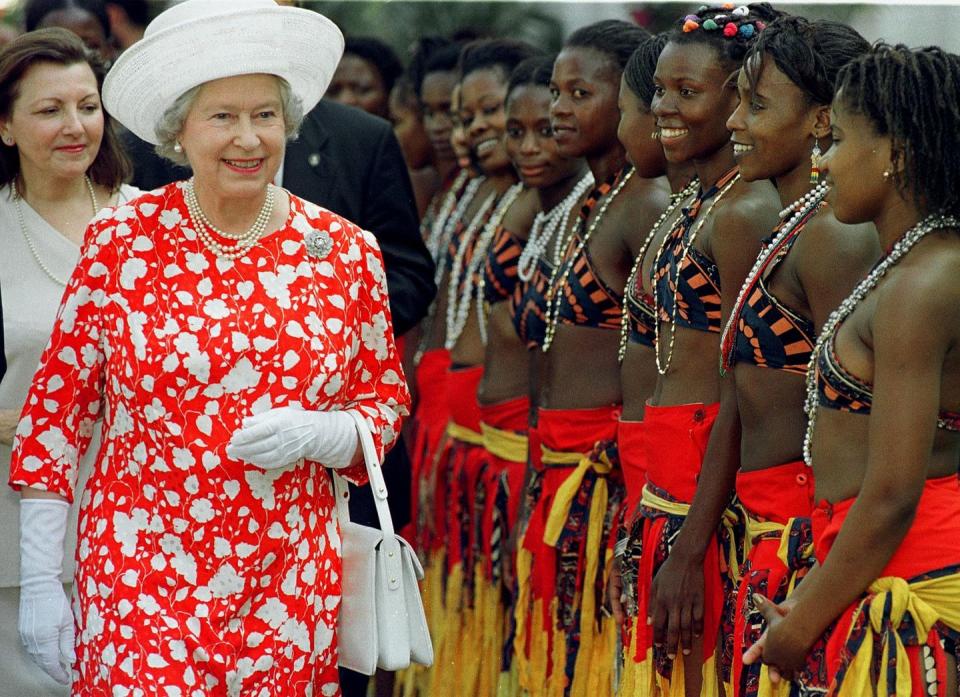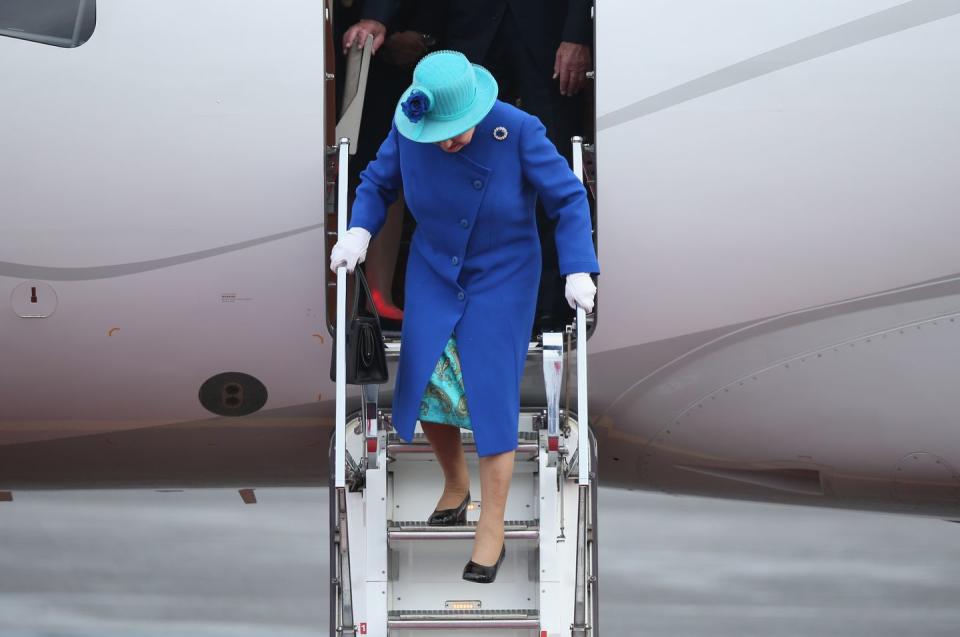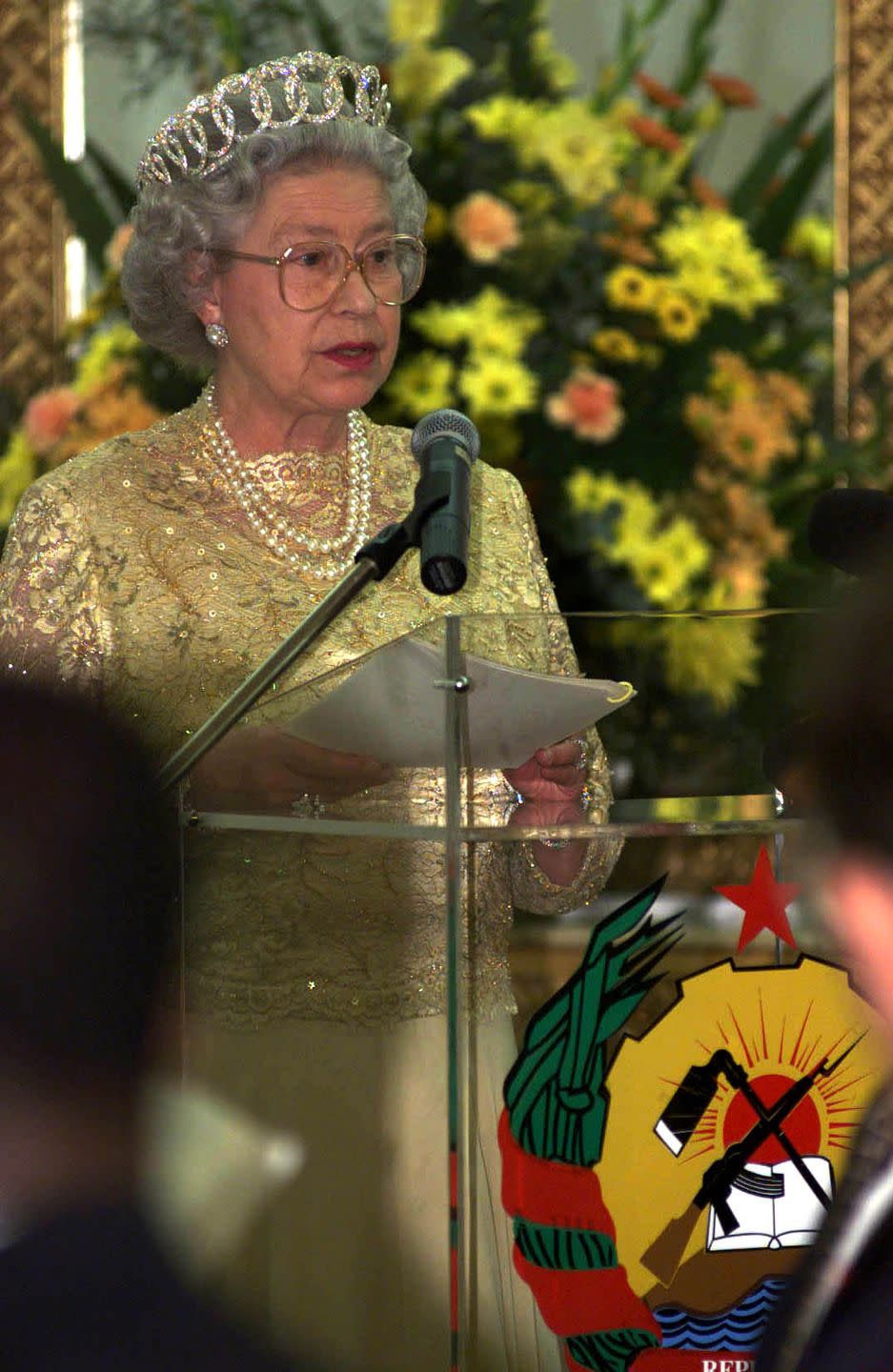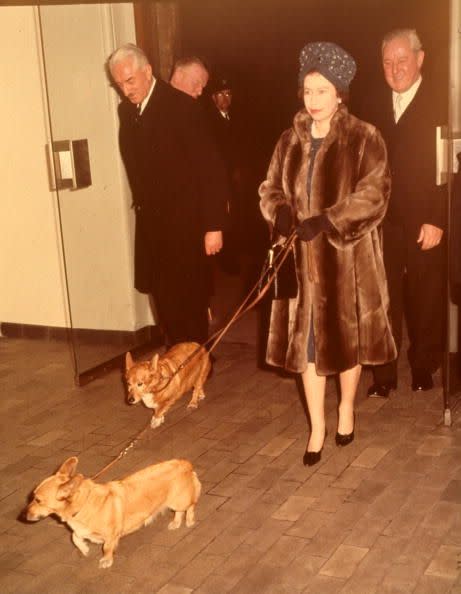What It Was Like Witnessing the Queen at Work
At precisely noon on November 15, 1999, following the final Commonwealth Heads of Government Meeting (CHOGM) of the 20th century, Queen Elizabeth II, with Prince Philip walking the proverbial two steps behind, arrived at Maputo's airport, en route to 12 hours of ceremonies culminating in an evening reception at the residence of Mozambique's president, Joaquim A. Chissano. The evening would close with an address by Her Majesty.
Press credentials in view, we watched as the Queen's flight, a British Airways aircraft, touched down. As Her Majesty is accorded a true "Royal Treatment," her consort is looking about, as if to document this scene for future pillow talk.

The airport festivities at an end, the now deceased Geoffrey Crawford, the Queen's press secretary, guided us to a strip of pavement and suggested we cross it en route back to the city. As we prepared to do so, the Royal limousine lurches into view, however, screeching to a halt just feet from where we stand! We can see the Queen and Consort and they can see us!
Fast forward to the evening and President Chissano's greeting of his Royal guests. As we stood on the platform leading into the president's residence, Her Majesty, resplendent in a long golden-hued gown, and Prince Philip ascend the stairs and the Queen flashes her radiant smile in greeting and enters the house while he tarries for a moment. Approaching us, he grabbed Deborah's credential, then looks at her, a glint in his eye, as if to say: So you are the journalists we almost killed at the airport!

Following the exchange of greetings and gifts, the party departed for a glass enclosed pavilion on the great lawn, where colorful peacocks strut about. Inside, following the exchange of toasts, the Queen rose as if to speak, then sat once again. We were a bit perplexed, and then, as we're standing in front of the building when Geoffrey Crawford suddenly dashed out, heading for the residence.
"What's happening," we called out.
Minutes later, he raced toward the pavilion again clutching a pair of glasses.
"Her Majesty left her spectacles behind," he explained, then entered the pavilion and handed the Queen the needed glasses for her evening address, prepared by her government’s foreign office.

The Queen, a remarkable listener, was brilliant about establishing relaxed settings, a case in point being when Her Majesty invited a British doctor to lunch who had been doing fantastic work with people suffering in Syria. The doctor had witnessed the most terrible things. When asked by the Queen to describe these episodes, the clearly traumatized physician could not go on. Responding to her guest's distress, Her Majesty asked that her corgis be brought into the room. The corgis' calming effect allowed the doctor to go on with her report.
As family tragedy enveloped Elizabeth II in the coming years, Her Majesty drew comfort from the presence of her beloved corgis.
One can only imagine what it must have been like for Elizabeth II to summon the discipline required to peruse red boxes of official papers, meet with members of her government, as well receive diplomats and other representatives of foreign nations, and host or attend a seemingly endless round of meetings and functions, all the while knowing that to each individual she must act the Queen, with all this entails, even her attire being scrutinized by a media only too eager to record any royal missteps.

On the day of her accession to the Throne, Great Britain continued to suffer the economic and societal aftershocks of world war. The nation was wracked by food and fuel shortages as labor unrest. A general malaise characterized the spirit of the country.
Thus, it is not surprising that in the United Kingdom, as well as in the nascent Commonwealth of Nations, hope arose for a "New Elizabethan Age," one that during the attractive and youthful Monarch's reign would usher in prosperity while engendering renewed interest in, and allegiance to, a royal system often shrouded in a heretofore largely unfathomable mystique.
Throughout her reign, the Queen undertook incremental steps in making the institution of the monarchy more publicly accessible. This process has in recent times been accelerated by advances in communication technology so that the royal website, along with social media, supplemented Queen Elizabeth's personal appearances and her annual Christmas broadcast.
Whatever the future holds, history will record with great approbation that for seventy years Elizabeth Alexandra Mary Windsor relayed the cards dealt her with remarkably consistent devotion to the monarchy.
In so doing, the late Queen would garner the respect of not only the peoples of the United Kingdom and Commonwealth, but of citizens of other nations who value stability and tradition, as demonstrated by the outpouring of both respect and grief following her death.
Deborah Hart Strober and Gerald Strober are the authors of Queen Elizabeth II An Oral History.
You Might Also Like


